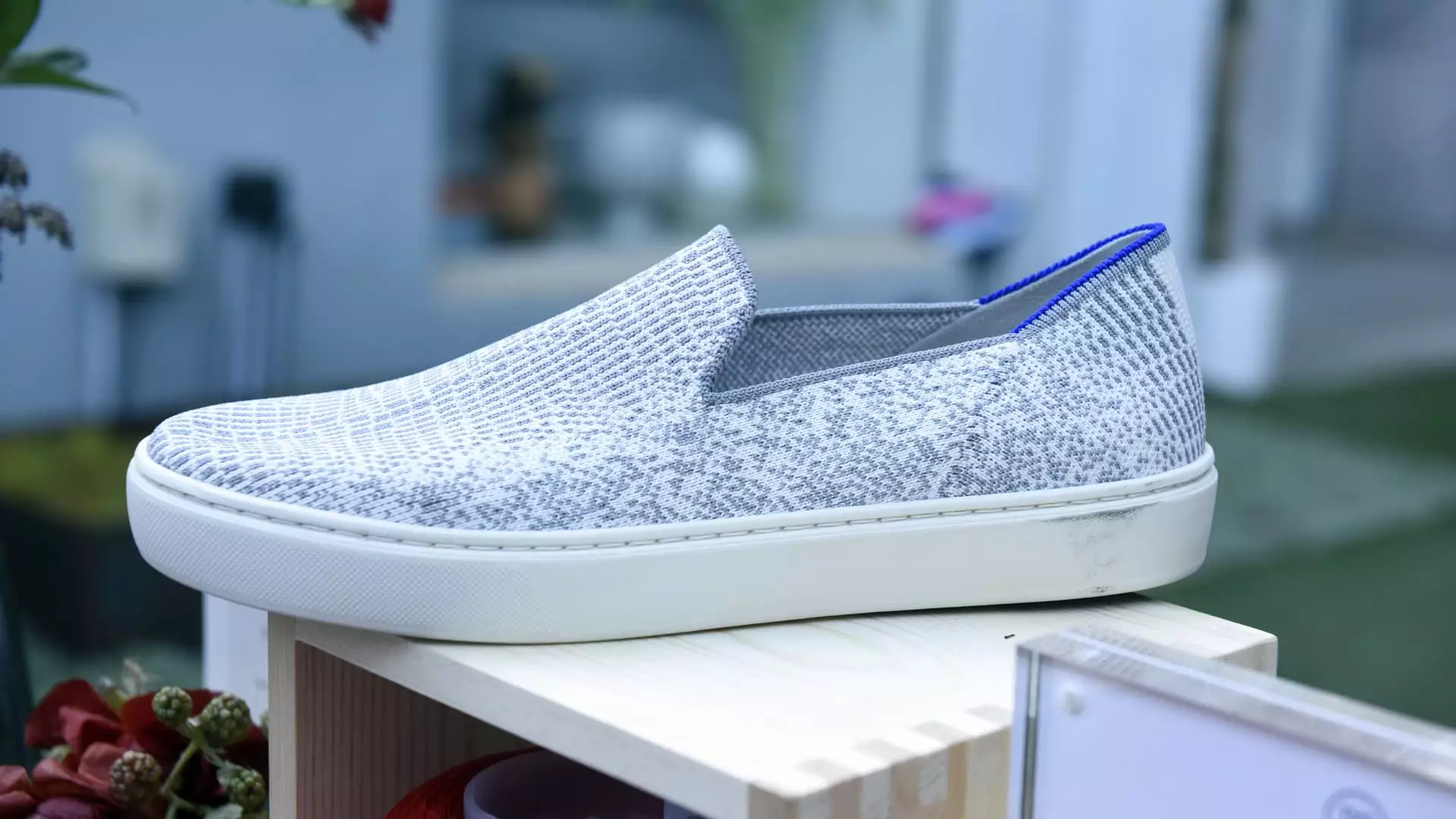In a rapidly changing retail landscape, direct-to-consumer footwear brand Rothy’s has redefined its trajectory following the appointment of retail powerhouse Jenny Ming as CEO. Known for co-founding Old Navy and her extensive leadership experience in the retail industry, Ming stepped in at the beginning of 2024, taking over from co-founder Stephen Hawthornthwaite. This strategic leadership change seems to be the catalyst for Rothy’s exceptional performance, marking its best financial year since its inception nearly a decade ago.
In an impressive display of resilience, Rothy’s achieved a remarkable 17% increase in sales, culminating in $211 million in revenue. This period marked the company’s best performance yet, particularly noteworthy given the stagnation in the broader U.S. footwear market, which reported negligible growth in 2024. Rothy’s success can be attributed to several factors, including the expansion into brick-and-mortar retail and enhanced wholesale partnerships. The rise in comparable sales—up 20% across its stores—along with positive EBITDA and margins surpassing 10%, demonstrates effective strategic shifts under Ming’s leadership.
The direct-to-consumer model, quintessential to Rothy’s early appeal, encountered mounting challenges around 2021, as many e-commerce brands grappled with customer acquisition costs. This shift in dynamics forced brands once heralded as the future—chiefly those relying on pure online sales—to explore traditional retail routes. Rothy’s response to these challenges has reframed its distribution approach, integrating both online and offline sales channels for a balanced business model.
In the face of a fiercely competitive retail environment, Rothy’s has proactively diversified its sales strategy. Jenny Ming emphasized the folly of disputing well-established online marketplaces, explaining, “If we weren’t on Amazon and someone searches for Rothy’s, they may find competitors instead.” This insight signifies a fundamental shift in retail logic, recognizing the importance of visibility across multiple platforms. Acknowledging that consumer shopping behaviors have evolved, Rothy’s adoption of a holistic selling strategy underscores the necessity of omnichannel marketing in today’s climate of changing consumer expectations.
While channel diversification presents a solution to customer acquisition challenges, it is clear that such strategies cannot substitute for a fundamentally sound business model. Rothy’s, with its foundation in sustainable and innovative footwear—originally crafted from recycled plastics and machine washable—has positioned itself as a responsible choice for consumers. Furthermore, the brand’s cult following, significantly bolstered by endorsements from high-profile figures like Meghan Markle, illustrates the power of storytelling and brand narrative.
As Rothy’s embarks on its next phase, the focus remains on sustainability—not just in terms of the products it offers but also through strategic business practices. Following significant investment from Brazilian footwear company Alpargatas in 2021, which provided a valuation boost to $1 billion, Rothy’s aimed to increase its physical store presence. However, the slowdown in online growth necessitated a reevaluation of tactics, and by 2024, a substantial pivot to omnichannel strategies was evident. Today, approximately 30% of the company’s revenue is generated from brick-and-mortar sales, signaling a marked shift from an online-heavy model.
Ming’s leadership emphasizes profit over mere growth, an approach that underscores a transition towards sustainability in operations. The practices implemented—such as calibrating marketing expenses and focusing on what consumers truly want—reflect a forward-thinking mindset aimed at maintaining profitability while also expanding product offerings. This adaptive approach serves as a reminder that retail success is not just about volume; it’s about strategic alignment with customer needs.
Looking ahead, Rothy’s is poised to capitalize on its strategic advancements with plans for further expansion into both brick-and-mortar retail and international markets. With a goal to eventually grow its store count to between 75 and 100 locations, the strategy remains carefully measured to ensure profitability. Ming’s insistence on cultivating strong relationships with wholesale partners—like Nordstrom—demonstrates an understanding that increasing customer touchpoints is crucial in enhancing brand visibility and accessibility.
Amidst these ambitions, Ming remains cautious, stressing that a single successful year does not cement long-term viability. The focus on refinement and adaptation speaks volumes about Rothy’s commitment to evolving alongside market demands, ensuring the brand delivers sustainable and appealing products while navigating the complexities of modern retail.
Jenny Ming’s leadership marks a critical turning point for Rothy’s, showcasing the brand’s commitment to resilience, strategic diversification, and a holistic approach to retail that merges digital convenience with the tactile experience of physical shopping. As this new chapter unfolds, Rothy’s embodies the adaptability and innovative spirit that are the hallmarks of successful brands in challenging times.

